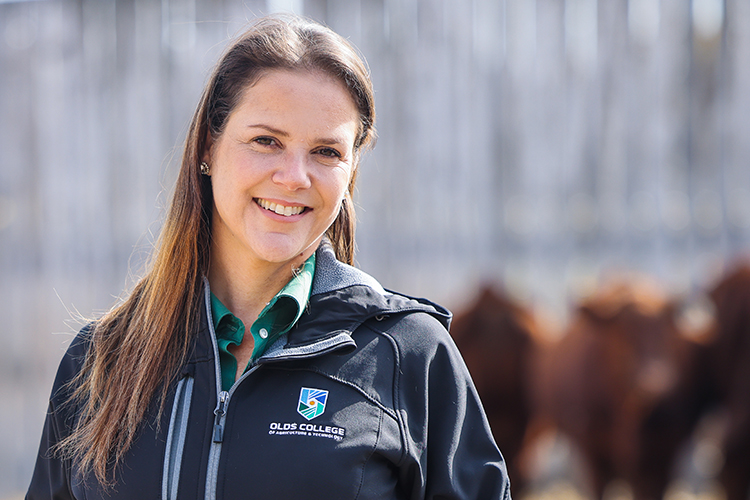Turning pollutants to products

Dr. Weixing Tan
To the casual observer, it looks like just a mobile set of glass tubes filled with bubbling microalgae culture. But according to Grande Prairie Regional College (GPRC) researcher ![]() Dr. Weixing Tan, this patented photobioreactor system can actually transform the pollutants created by human beings into products with significant commercial potential. As the principal investigator of the
Dr. Weixing Tan, this patented photobioreactor system can actually transform the pollutants created by human beings into products with significant commercial potential. As the principal investigator of the ![]() Pollutants to Products (P2P) Microalgae Technology team, Tan has spent the past 11 years researching ways to maximize the usefulness of microalgae. When he first began studying this single-celled organism, he was particularly impressed by its potential for carbon capture and emissions reduction.
Pollutants to Products (P2P) Microalgae Technology team, Tan has spent the past 11 years researching ways to maximize the usefulness of microalgae. When he first began studying this single-celled organism, he was particularly impressed by its potential for carbon capture and emissions reduction.
Normally found in freshwater systems, microalgae functions like any other plant. Only about five to 10 micrometres in size, it works as a natural decontaminator, removing toxins from wastewater and absorbing carbon dioxide and other greenhouse gases from the air. It’s also up to 100 times more efficient at capturing carbon than traditional agricultural crops, while growing up to 100 times faster in a fraction of the space. This versatile plant matter can also be used to produce biofuels, medicine, vitamin supplements, cosmetics, and feed for livestock as well as humans. “And yet, I found that nobody had been overly successful in growing microalgae on a large scale for this purpose,” says Tan.
In 2016, Tan’s team received two Canadian patents for their bioreactor technology, which enables microalgae to be grown more efficiently and sustainably. A fully automated, computer-guided system reduces incoming sunlight without having to block it, delivering only five to 10% of the sunlight to the microalgae - exactly what they need to optimally photosynthesize and grow into proteins, says Tan.
The P2P clean technology developments (including microalgae) were made possible through a five-year NSERC Innovation Enhancement Grant, as well as over $4 million in contributions from GPRC and other industry and institutional partners, including Cenovus, EnEco, and the Peace Region Economic Development Alliance (PREDA).
This technology is only one of several major projects Tan’s team is currently developing which hold significant potential. They’re also addressing one of the most difficult environmental challenges faced by the oil sands industry: finding more efficient and less costly ways of removing contaminants from water used in bitumen processing.
Tan and his colleagues are testing a cheaper, simpler way to separate 50% of the water from tailings sediments, using less energy than with current measures. “Once separated, we can grow microalgae in that water to remove any remaining contaminants – and once cleaned, oil companies can reuse that water for their mining operations,” says Tan, who recently filed a patent for this technology as well. The potential of P2P Microalgae Technology is practically endless. “Billions of years ago, microalgae enriched the atmosphere with oxygen and allowed the first living organisms to evolve, sustaining life on this planet,” said Tan. “I believe it will repeat its contribution to the Earth.”
This article was adapted with permission from the ![]() Grande Prairie Regional College.
Grande Prairie Regional College.
Up next

Advancing Reproductive Efficiency & Stress Management in Beef Heifers
The primary goal of a cow-calf operation is to produce one calf per cow per year. However, the journey to achieving this reproductive success is fraught with challenges influenced by a variety of factors, including genetics, nutritional status, and stress, each playing a crucial role in the performance of heifers.